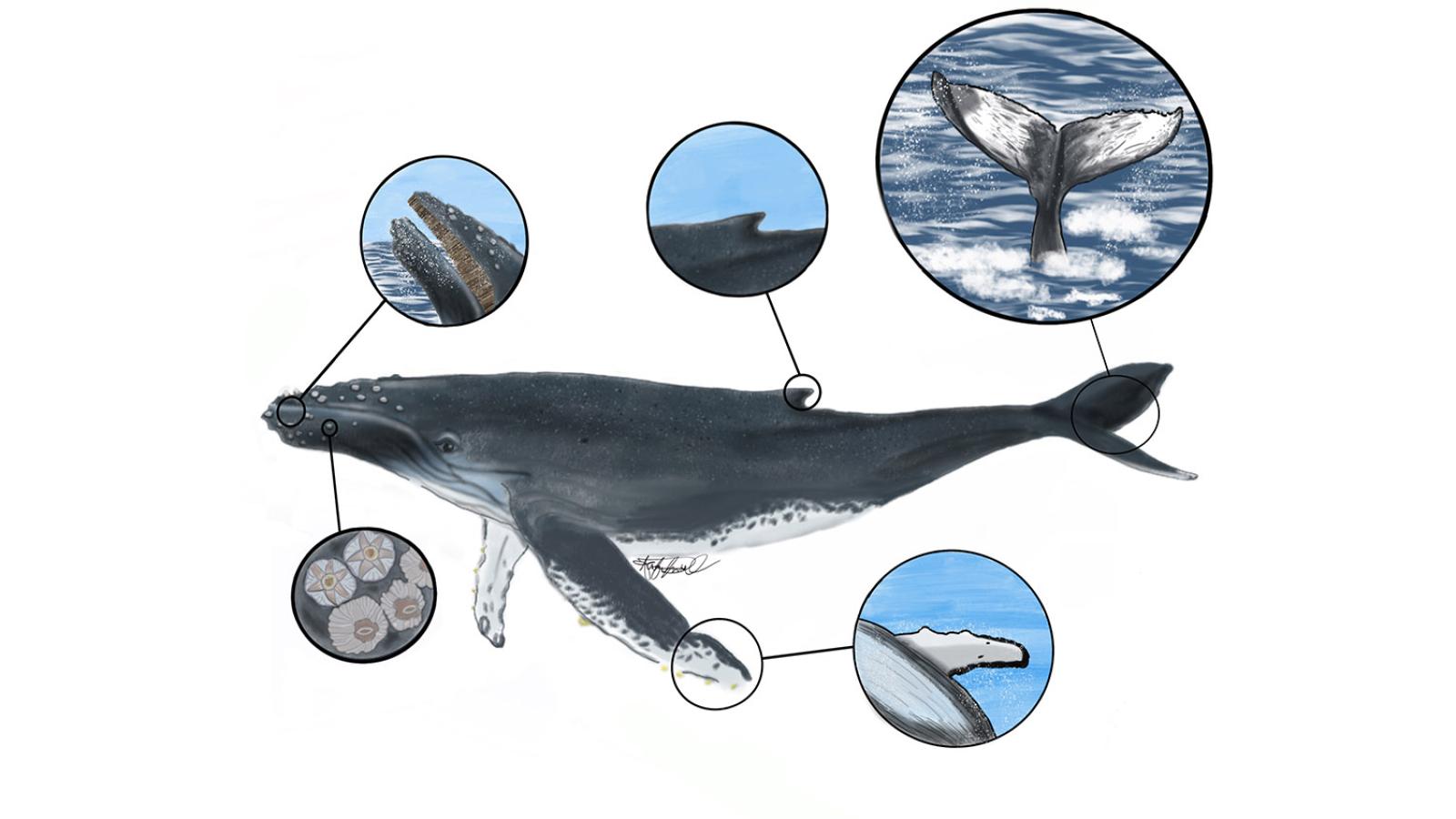It can be the shape of a whale’s dorsal fin, the spray pattern from its blowhole, even the barnacles on its back. Those characteristics can help whale-watchers identify animals they glimpse on the water, even with limited training.
Andreah Pierre ’22, a Pomona College biology major, always has been fascinated by the ocean, studying coral reefs, sea turtles and the effects of pollution while at South Broward High School near Miami. Though she has gone whale-watching on Biology Department trips off the coast of Southern California, the many whales and other marine mammals found in the Salish Sea off the coast of Washington weren’t on Pierre's radar until last summer, when she interned at The Whale Museum in the San Juan Islands as part of the Doris Duke Conservation Scholars program.
Tasked with entering data on sightings reported to the museum’s whale hotline by phone or email, Pierre developed an independent project to help amateur whale-watchers more accurately identify what they spot.
A Rediscovered Talent
Working with mentor Salma Abdel-Raheem, the museum’s marine mammal sightings network coordinator, Pierre created a series of illustrated guides. In the process, she rediscovered her love of art and realized she could combine graphic design with her biology degree to pursue a career as a scientific illustrator.
“My mentor at the Whale Museum had always wanted to do something about helping people figure out what they were witnessing,” Pierre says. She told Abdel-Raheem she loved art, but the strong focus on science that helped make Pierre a member of Pomona’s Posse Foundation Miami STEM cohort meant she hadn’t spent time exploring her artistic talents since early in high school. “Just try it out,” her mentor told her.
Using a free paintbrush app at first, Pierre created images of whales and smaller marine mammals, zeroing in on just a few distinct identifying features for each, accompanied by explanatory text.
“What makes my field guide different from any other book you grab about whales is that the book will tell you the ins and outs of the anatomy and all about the whale, versus my image is literally meant to only point out the things that you'd see if you were on the water,” Pierre says.
“When I submitted my first image to my mentor, she said, ‘Oh, you know what you are doing.’ And I said, ‘No, I’ve never done this before.’ But she said, ‘This is really good,’ and has helped me incorporate it into my senior thesis and really wants me to get it published.”
Someone soon showed Pierre how much more she could do with a $10 app called Procreate, and her self-taught digital painting skills continued to blossom into works of art that she signs and watermarks to protect her work as she prepares a thesis project based on her illustrations.
A Thesis Project
“I’m working with Professor [Nina] Karnovsky, and I’m trying to do two different surveys,” Pierre says. “You take one survey, and I ask you to watch a little video clip that’s like five seconds. And I ask you what you think you saw. Then you take the survey again with my guide and I ask, ‘Now, can you figure out what it is?’” (See box at right.)
The hope is that with Pierre’s guide at their disposal—either in printed form or on a personal device—whale-watchers won’t mistake the black-and-white markings of a Dall’s porpoise for a baby orca, or confuse a quiet gray whale for a humpback whale.
“Hopefully in the future I can add more field guides because they are meant to have all the marine mammals that are on the Salish Sea, and that includes pinnipeds, which are seals and such,” Pierre says.
A senior, she has applied to Cal State Monterey Bay’s science illustration graduate program as a stepping stone to seeking jobs with organizations such as science magazines or other publishers, natural history museums, aquariums or zoos. Art, her forgotten high school talent, could become Pierre’s career.
“The funny thing is, after sophomore year, I never picked up another paint brush, because my whole life was very much, ‘You've got to do science, you've got to get a good job, you've got to have something,’ and art was not an option in terms of getting a good job,” Pierre says. “It wasn't until the past summer when I realized, ‘Oh, I could do art and science,’ and I really do love science.”
